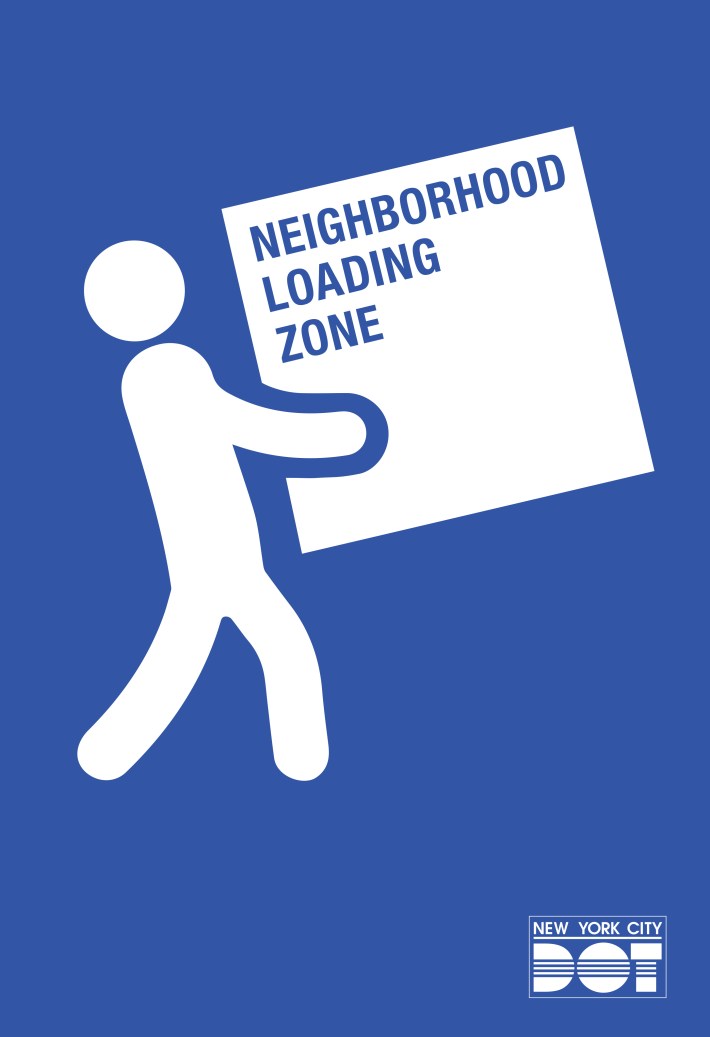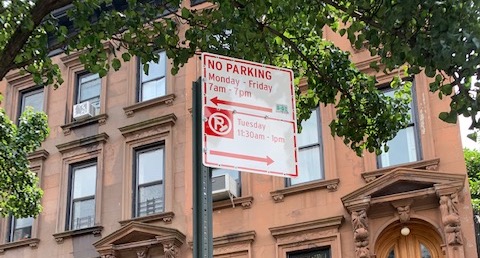The city’s pilot program bringing loading zones to more residential streets is one of the most public-spirited, forward-thinking safety initiatives in years — and the Department of Transportation ought to expand it, pronto!
The program, which DOT quietly introduced several months ago, seeks to respond to the huge surge in e-commerce — as well as the number of families and the graying of the city’s population — by dedicating some curb space for loading and unloading, deliveries, pick-ups and drop-offs.
That way, when UPS or Fresh Direct needs to deliver a package — or your kids or your elderly relative must be picked up or dropped off — there is a safe place at the curb enabling such egress and allowing buses and other traffic to get by. The loading zones also aid such public purposes as street cleaning and snow removal. And they protect cyclists from having to veer into traffic to avoid a double-parked truck making a legal, but dangerous, "expeditious delivery."
Without loading zones, our streets are a chaotic riot of double-parking and unsafe unloading that makes cycling a nightmare and costs lives.
Yet residents of one pilot area — Fort Greene/Clinton Hill — are only thinking of themselves and their parking. It's not just shortsighted and selfish — it's hypocritical, given how many residents of the neighborhood enjoy the benefits of home-delivered food, packages and other fruits of e-commerce.
On Tuesday night, another group of car owners in the neighborhood organized a meeting in Brooklyn to protest the loading zones. (See Julianne Cuba’s dispatch here.)
DOT’s reaction remains to be seen; after the first sally against the program, DOT Commissioner Polly Trottenberg said she was not backing down. Trottenberg unveiled new signage (below) in order to clarify for car owners the public good resulting from the program.

We’ll state it again: The curbside lanes of the city's roadways are public space; they were not created for the free storage of private vehicles. Free parking, which subsidizes car owners to the tune of thousands of dollars annually at the expense of the non-car-owning majority, is not an inalienable right or entitlement. In fact, New York City did not even allow parking overnight on streets until 1950.
There are many millions of parking spaces in the city — in fact, about 5,378,000, by one estimate, and 97 percent of the on-street parking is free. The fact that some curbside space is being used for other purposes ought to be applauded, not resisted.
It is smart urban policy — and the essence of social justice — to prioritize the safety of all road users and residents by dedicating constrained curb space to loading zones.
Why should residents tolerate the constant dangers to life and limb represented by double-parking?
Why should they tolerate the traffic and fumes that come when a street is completely blocked by a large vehicle?
Why should residents tolerate poor access for delivery services, such as UPS and FedEx, whose trucks come several times a day?
Why should they tolerate poor access for their own loading and unloading, or for pick up and drop off by car services?
Yet some say “no” to loading zones, on the idea that the majority must safeguard the privileges of the car-owning few who want to park for free at any hour in front of their buildings.
Really?
Council Speaker Corey Johnson is pushing back against the pro-parking lobby.
“This is about saving lives,” he said on Tuesday when asked by Streetsblog about DOT policies such as the loading-zone pilot. “When we need to make upgrades to our city streets for bike lanes, for further pedestrianization, for bus lanes, that is going to mean we have to remove some parking spaces. And that is the appropriate thing to do. We cannot allow private automobiles to be prioritized over the lives of New Yorkers who are trying to get around in a safe way. It’s about showing leadership and showing that it is time to reorient our priorities.”
Our leaders need to keep our streets clear and safe. DOT must make tough decisions on how to balance all the different and growing needs in the limited geometry of city streets. We say to DOT, please don’t let parking hogs slow the momentum of this policy. Please bring residential loading zone to all areas of the city, our streets next!
Hilda Cohen (@HildaBikes) is a cycling activist in Brooklyn. She is the founder of Make Brooklyn Safer and the cofounder of KiDiCAL Mass NYC. Janet Liff (@localempower) is the director of the Neighborhood Empowerment Project at OpenPlans.






